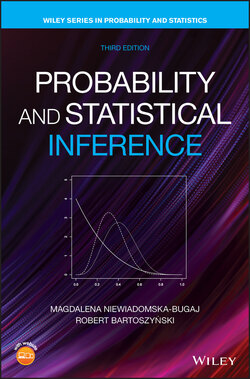Читать книгу Probability and Statistical Inference - Robert Bartoszynski - Страница 41
Example 1.22
ОглавлениеTake an experiment consisting of tossing a coin infinitely many times. The “natural” sample space is the space of all infinite sequences where or 1 (or any other two distinct symbols representing heads and tails). The “simple” events here are of the form “heads on the th toss,” that is, sets of all infinite sequences with the th coordinate satisfying . The events in the field generated by the simple events are of the form “heads on tosses and tails on tosses ,” with both and finite and the outcomes of all other tosses remaining unspecified.
An event that does not belong to this field, but does belong to the ‐field generated by the simple events, is the event that “as the number of tosses increases, the frequency of heads approaches a limit.” Clearly, to determine whether or not this event occurs, it does not suffice to know any finite number of coordinates .
To generalize this example, replace the outcome of the coin tosses by the result of some experiment repeated infinitely many times. This way the coordinate carries more information than it does for the outcome of th coin toss. The “simple” events are now of the form of sets of sequences with for , while the 's for are unconstrained. Here are events that occur at the first times of observations. The “simple” events described above, of an obvious interest and importance both in applications and in building the theory, are called “cylinder” events. The smallest ‐field containing all cylinder events comprises all events that may be of interest, including those that are obtained through limits of sequences of cylinder events.
